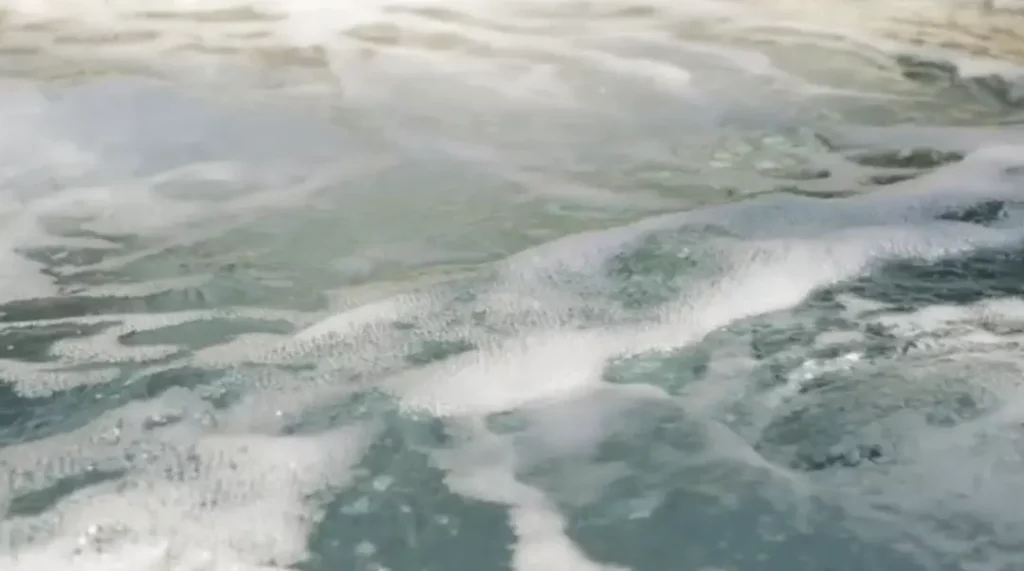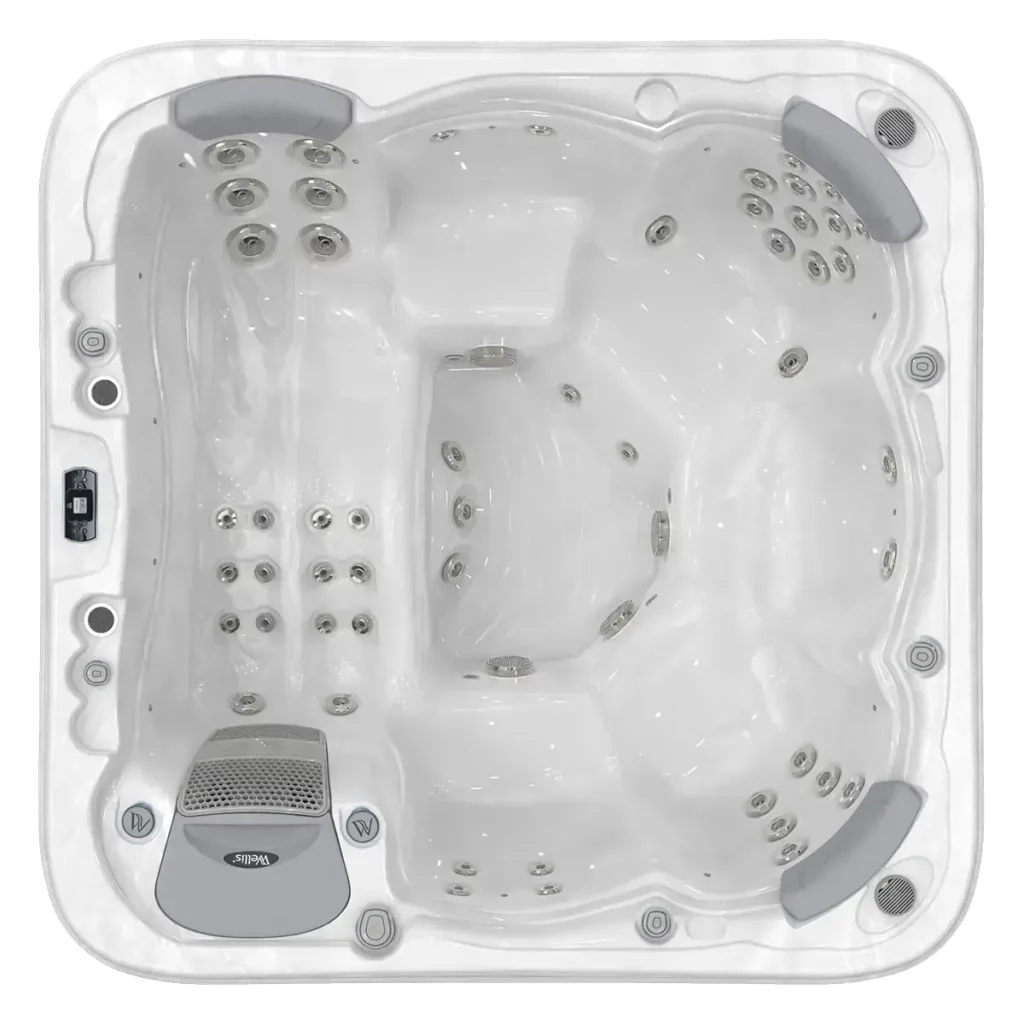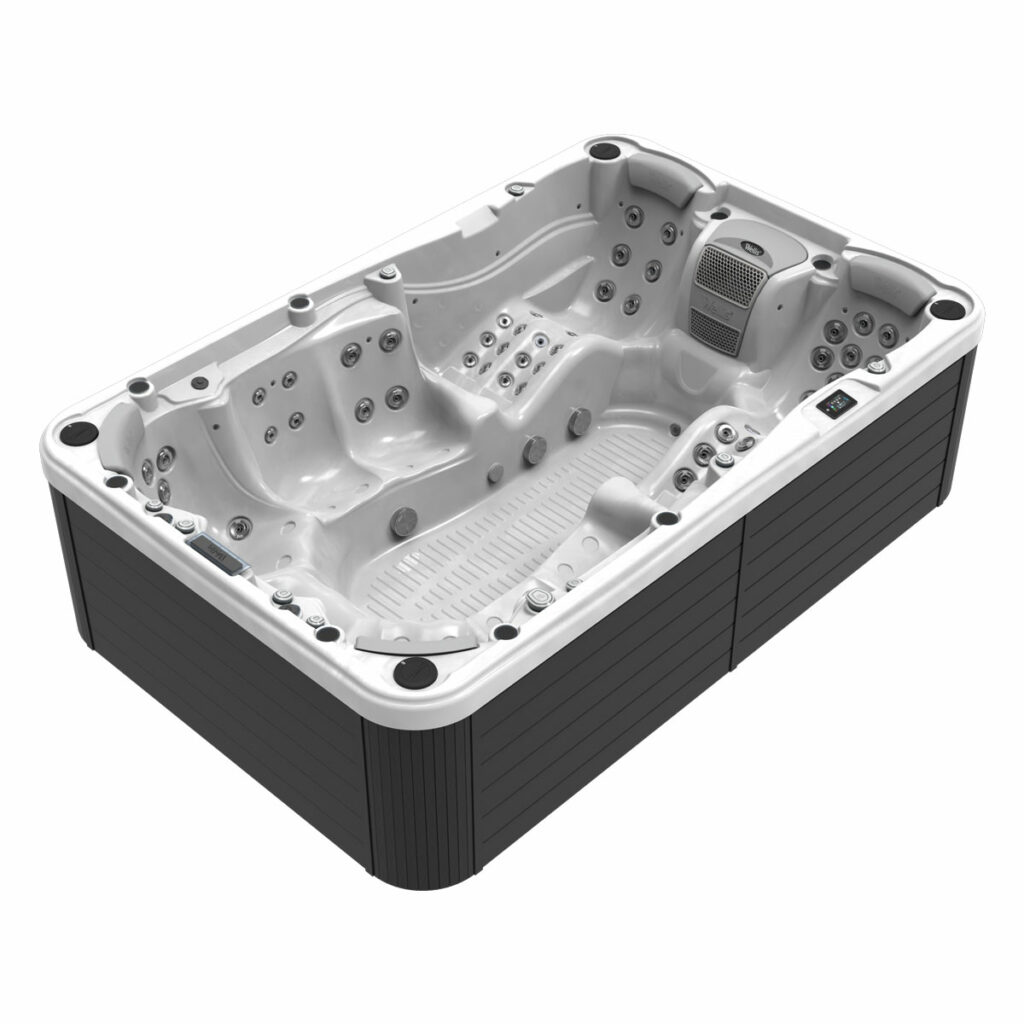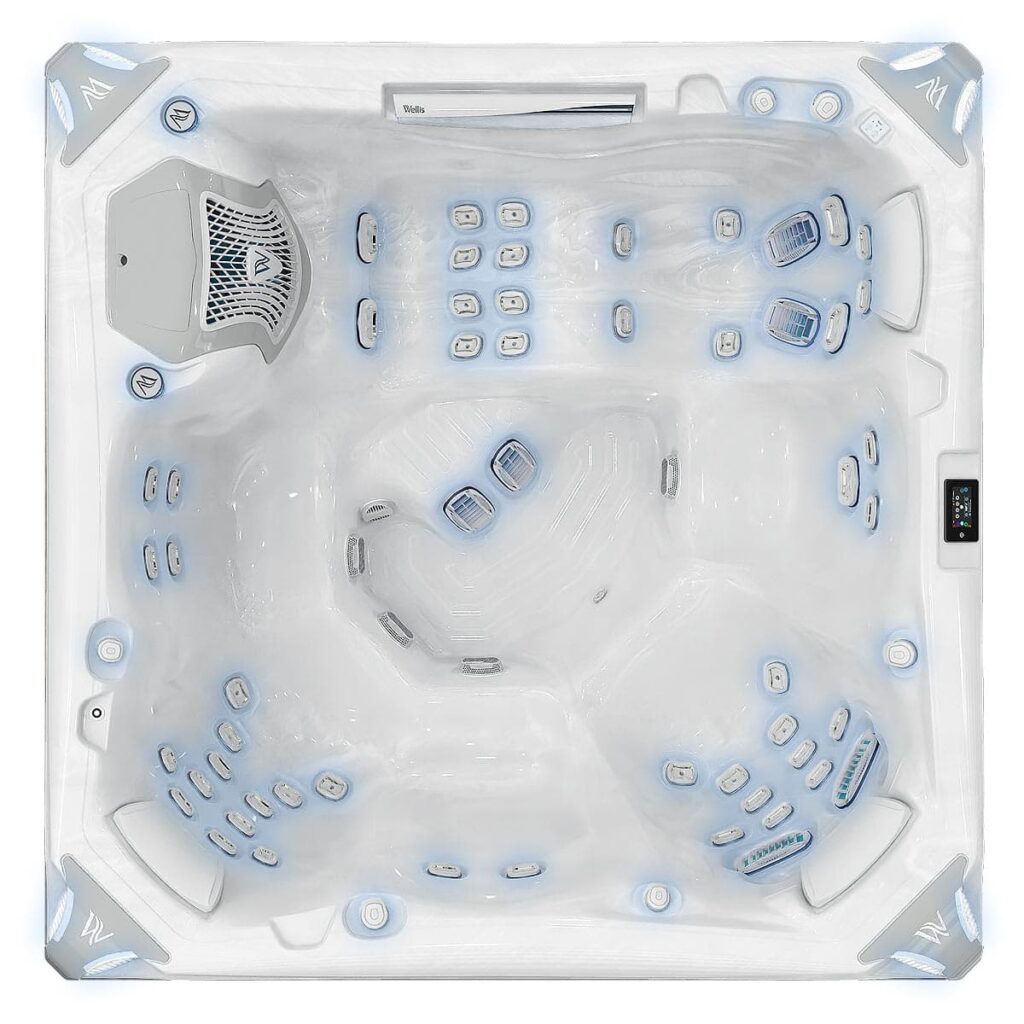Inflatable hot tubs’ popularity is on the rise. Affordable, portable, and seemingly effortless; inflatable hot tubs seem like a way to bring the luxury of a spa experience to your doorstep. But beneath the surface, there are some pitfalls that potential buyers need to carefully consider.
Here, we'll delve into the world of inflatable hot tubs to shed light on the challenges and drawbacks that come with blow-up spas. From durability concerns to performance limitations, it's essential to be well-informed before taking the plunge into inflatable hot tub ownership - so you don't have to.

Table of Contents
What Is an Inflatable Hot Tub?
An inflatable hot tub, also known as a portable or blow-up hot tub, is a temporary and easily transportable alternative to traditional, permanent hot tubs. These portable spa units are typically made from durable, puncture-resistant materials and are designed to be inflated and deflated as needed.
These hot tubs are characterized by their simple setup process, often requiring only a flat surface, access to electricity, and a garden hose for filling. They come equipped with a built-in pump and heating system, allowing users to control water temperature and jet intensity. The inflatable nature of these hot tubs makes them highly versatile, and suitable for various living spaces, including small backyards, balconies, or even indoor use.
While inflatable hot tubs provide a range of benefits, including ease of installation, portability, and affordability, it's important to be aware of potential pitfalls such as durability concerns and performance limitations. Understanding both the advantages and limitations of inflatable hot tubs is important for making informed decisions based on their preferences and lifestyle.
Pros of Inflatable Hot Tubs
In some cases, inflatable hot tubs offer a more flexible and budget-friendly option—which is why they have so quickly grown in popularity. While they have plenty of pitfalls, these versatile models do offer some advantages.
1. Affordability
One of the most significant pros of inflatable hot tubs is their affordability. Traditional hot tubs often come with hefty price tags, including installation costs, which can range from $2,000 to $35,000. Inflatable models often cost less than $1,000, offering a cost-effective alternative.
2. Portability and Flexibility
The inflatable nature of these hot tubs provides unparalleled flexibility. Whether you want to relocate your relaxation spot to another corner of the backyard or take it with you when you move, the portability of inflatable hot tubs allows for an adaptable and dynamic spa experience.
3. Simple Installation
Setting up an inflatable hot tub is a breeze. No need for specialized tools or professional installation services—just find a flat surface, plug it in, and let the hot tub inflate. This simplicity makes them an excellent option for those who appreciate hassle-free solutions.
4. Space-Saving Design
Inflatable hot tubs are available in various sizes to accommodate different space constraints. Their space-saving design is particularly advantageous for those with limited outdoor space or those looking to set up a hot tub on a balcony.
5. Ease of Storage
When the hot tub is not in use, it can be easily deflated and stored away. This feature is invaluable for those who want to reclaim their outdoor space during certain seasons or when the hot tub is not in regular use.
6. Affordable Repairs
In the event of minor punctures or leaks, inflatable hot tubs offer cost-effective repair options. Many manufacturers provide repair kits that allow users to address issues promptly and extend the lifespan of their inflatable hot tub without breaking the bank.
Cons of Inflatable Hot Tubs
While inflatable hot tubs offer an enticing and budget-friendly entry into the world of at-home relaxation, it's essential to explore their drawbacks alongside their advantages.
1. Durability Concerns
One of the primary drawbacks of inflatable hot tubs is their susceptibility to damage. Despite advancements in puncture-resistant materials, the risk of accidental punctures or tears is higher compared to the sturdier construction of traditional hot tubs. This vulnerability can lead to maintenance challenges and a need to regularly replace your spa.
2. Longevity Issues
Inflatable hot tubs may have a shorter lifespan compared to their permanent counterparts, thanks to those same durability concerns. The wear and tear from regular inflation, deflation, and exposure to the elements can contribute to a shorter overall product life. Buyers should carefully consider the longevity of the hot tub in relation to their long-term relaxation goals.
3. Limited Seating and Space
While inflatable hot tubs come in various sizes, they may not offer the same spaciousness as traditional models. The compact design, while beneficial for portability, can limit the number of people the hot tub can comfortably and safely hold.
4. Performance Limitations
Inflatable hot tubs may have performance limitations in terms of jet power and water temperature. Achieving the robust massage experience provided by permanent hot tubs with high-powered jets can be challenging. Plus, maintaining higher water temperatures in inflatable models may be more energy-intensive.
5. Setup and Heating Time
While the setup of inflatable hot tubs is generally straightforward, the time it takes for these models to reach the desired temperature can be longer compared to traditional hot tubs. This drawback may test the patience of users who want a spontaneous and immediate hot tub experience.
6. Noise Levels
The inflatable design of these hot tubs may result in increased noise levels from the pump and heating system. While this may not be a significant issue for all users, it's a factor to consider, especially for those who value a quiet and serene soaking experience.
7. Limited Features
Compared to permanent hot tubs, inflatable models may have limited features and customization options. This includes fewer jet configurations, lighting choices, and other amenities that enhance the overall spa experience.
8. Energy Efficiency
Inflatable hot tubs are far more susceptible to heat loss, which means they’ll require additional energy to maintain desired water temperatures, especially in colder climates. The insulation properties of inflatable hot tubs don’t stack up to that of the well-insulated, hard-shell construction of traditional hot tubs. As a result, inflatable models often experience higher energy consumption, leading to sky-high electricity bills.
Learn about Wellis' energy-efficient hot tubs and what makes us one of the best hot tub brands.

Lugano Life Hot Tub
The Lugano Life hot tub features 5 spacious seats and a full sized lounger, all equipped with powerful massage jets to provide unmatched hydrotherapy.

Olympus Hot Tub
As many as 9 people can comfortably relax in the Olympus hot tub that meets the highest needs. You may also enjoy the beneficial effects of warm water in this hot tub with 7 seats, 2 recliners, and a bevy of jets, ensuring a massage experience greater than ever before.

Kilimanjaro Life Hot Tub
The Kilimanjaro hot tub features 59 incredible jets, 6 seats and a full sized lounger.
This hot tub makes hydrotherapy unforgettable with it’s infinity foot massage, foot, calf and thigh massage in one reclining seat all at once! Our PeakLife spas have the new LightSide™ design cabinet paired with vertical corner elements, lending an elegance touch to the aesthetics.
Cost of Inflatable Hot Tubs
Inflatable hot tubs may cost as little as $200, or as much as $2,000. Ultimately, the cost of inflatable hot tubs depends on a few factors.
1. Initial Purchase Price
One of the primary appeals of inflatable hot tubs is their comparatively low initial purchase price. Traditional hot tubs, complete with intricate plumbing, powerful jets, and durable construction, often come with a significantly higher price tag. Inflatable hot tubs provide an affordable entry point into the world of at-home spa experiences.
2. Installation Costs
Setting up an inflatable hot tub is a straightforward process that can be done without professional assistance. Unlike traditional hot tubs that may require specialized installation services, inflatable models typically only require a flat surface, access to electricity, and a garden hose for filling.
However, even this doesn’t always go as planned. You may be faced with additional costs for leveling the ground on which you put the hot tub, or for installing the proper electrical outlets at a safe distance.
3. Operating Costs
Inflatable hot tubs are not often designed with energy efficiency in mind. In fact, their lack of efficient insulation often means they quickly lose their heat energy, and they may actually cost more to run in the long term than their permanent counterparts.
FAQ: Pitfalls of Hot Tubs
Can inflatable hot tubs be outside in winter?
Yes, inflatable hot tubs can be used outside in winter! However, especially cold weather has been known to affect their efficiency and wear them down pretty quickly. The heater may need to work overtime on these models to keep the water at the perfect temperature, which can lead to a shockingly high bill from your energy company. To counteract this, try thermal blankets or covers to minimize heat loss and enhance overall energy efficiency.
It’s also a good idea to keep an eye on the inflatable hot tub's components, including the pump and heater, to make sure they are working correctly.
Do inflatable hot tubs get hot enough?
Some inflatable hot tubs can reach and maintain high temperatures similar to that of a traditional hot tub. Keep in mind that it will likely cost more to keep an inflatable hot tub at these temperatures.
What is the lifespan of an inflatable hot tub?
On average, a well-maintained inflatable hot tub can last anywhere from 3 to 7 years. That’s significantly less than that of a traditional hot tub, which can last for 15 to 20 years or more.
Final Word: Pitfalls of Inflatable Hot Tubs
While inflatable hot tubs offer some temporary advantages, serious buyers should weigh the downsides before making a decision. It may very well be time to make the investment into a traditional hot tub over a temporary portable spa.
If you decide that an inflatable hot tub isn’t right for you, Wellis Spas offers an extensive line of premium hot tubs and swim spas, all manufactured with our signature attention to detail and quality. If you're searching for places to test hot tubs for sale near you, explore our hot tub dealer locator, or get in touch with Wellis® Spa 844-4-WELLIS.

![Wellis Hot Tub Store in [cityst]](https://wellisspa.com/wp-content/uploads/Wellis-Hot-Tubs-in-Raleigh-Hero.webp)
